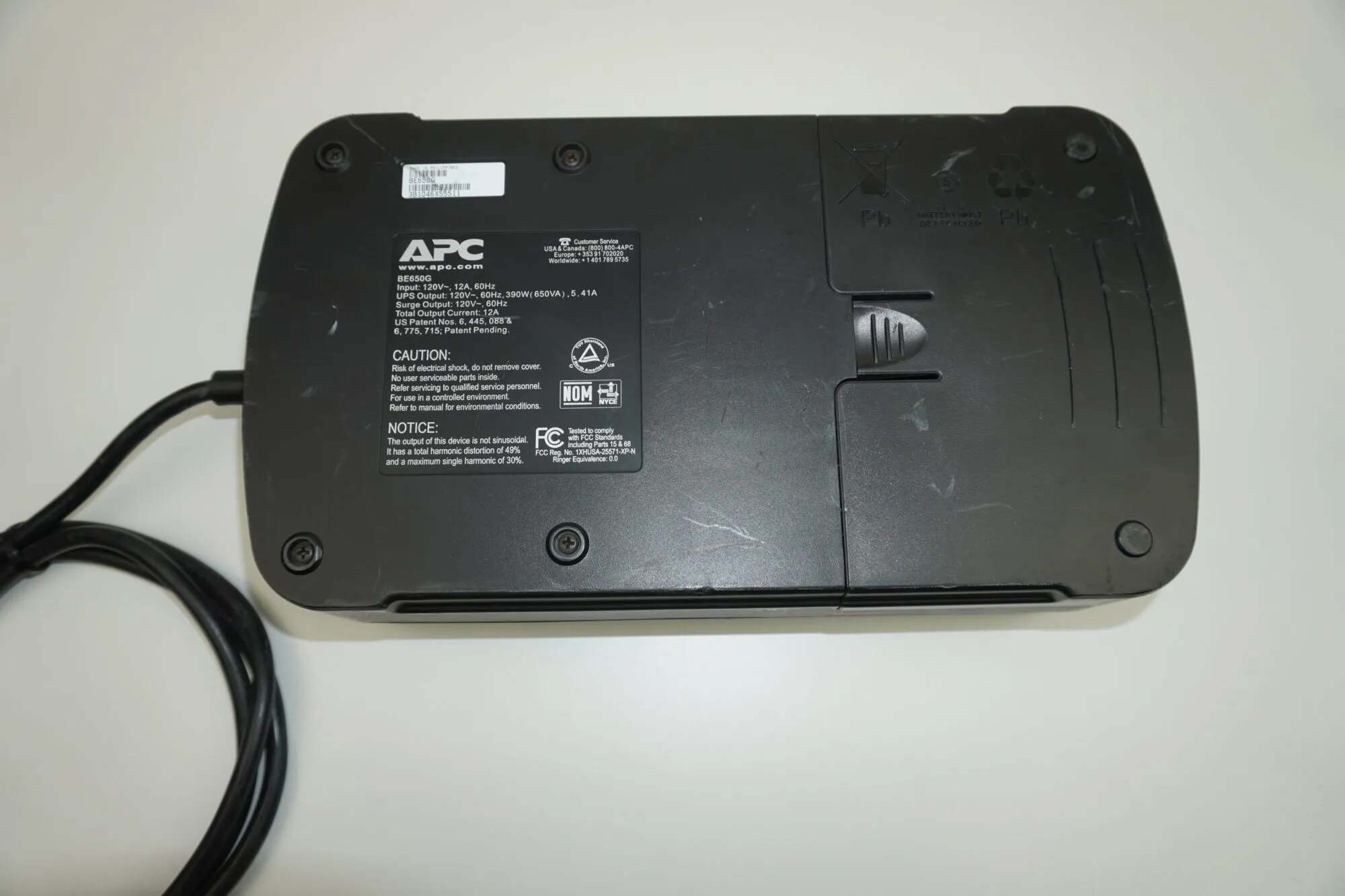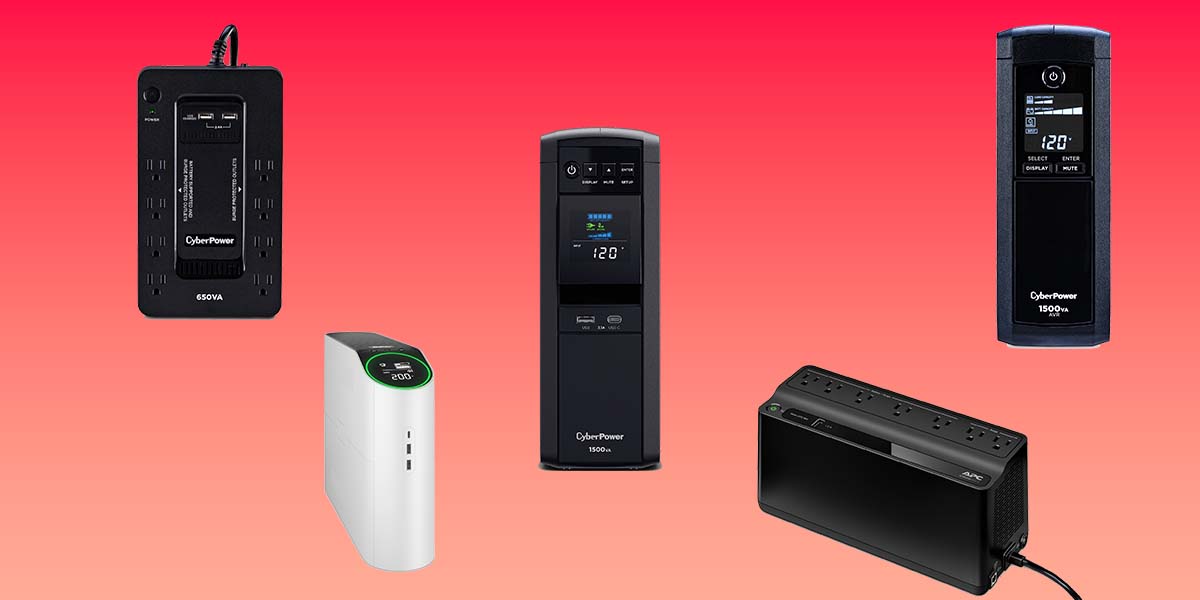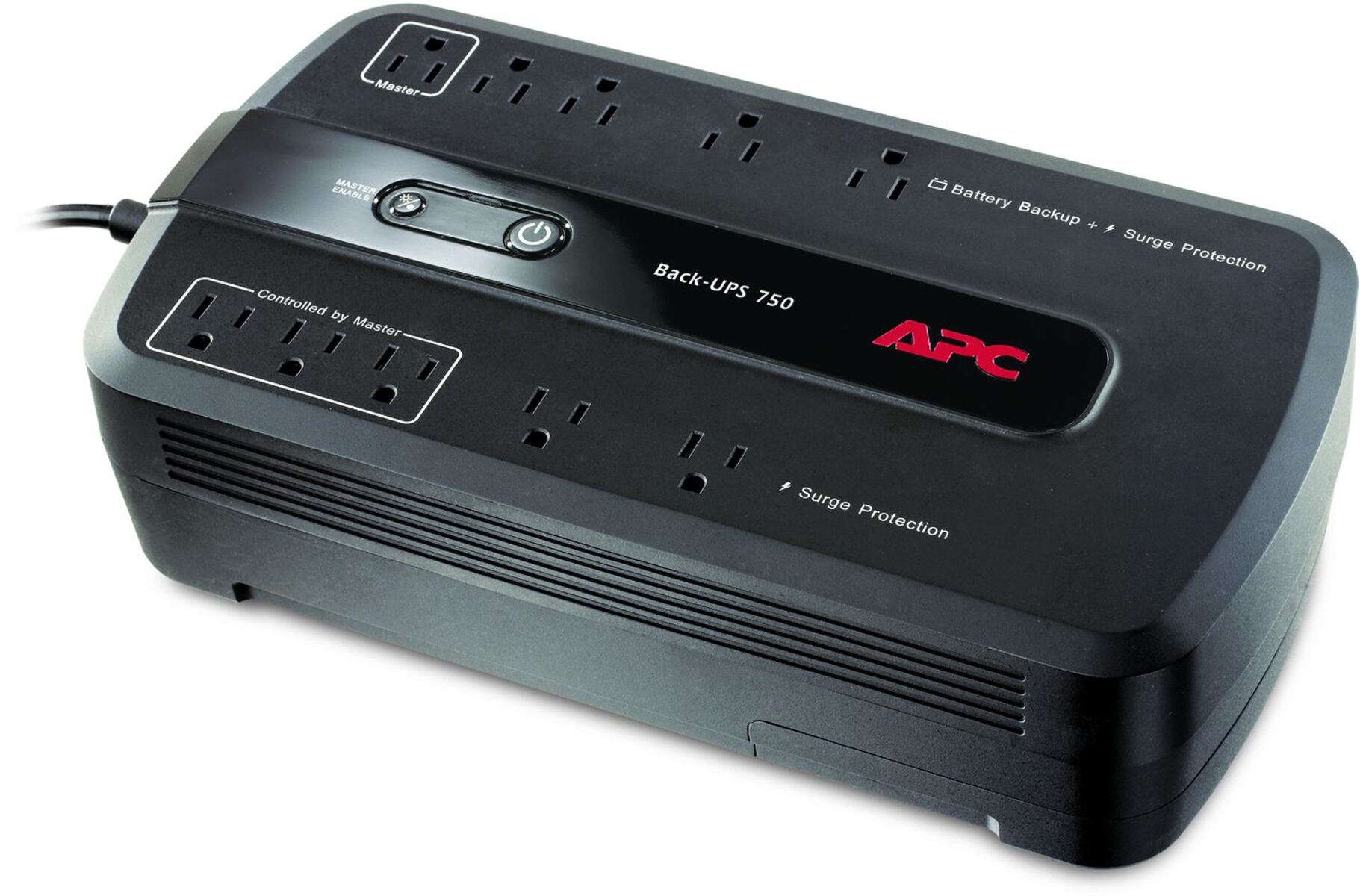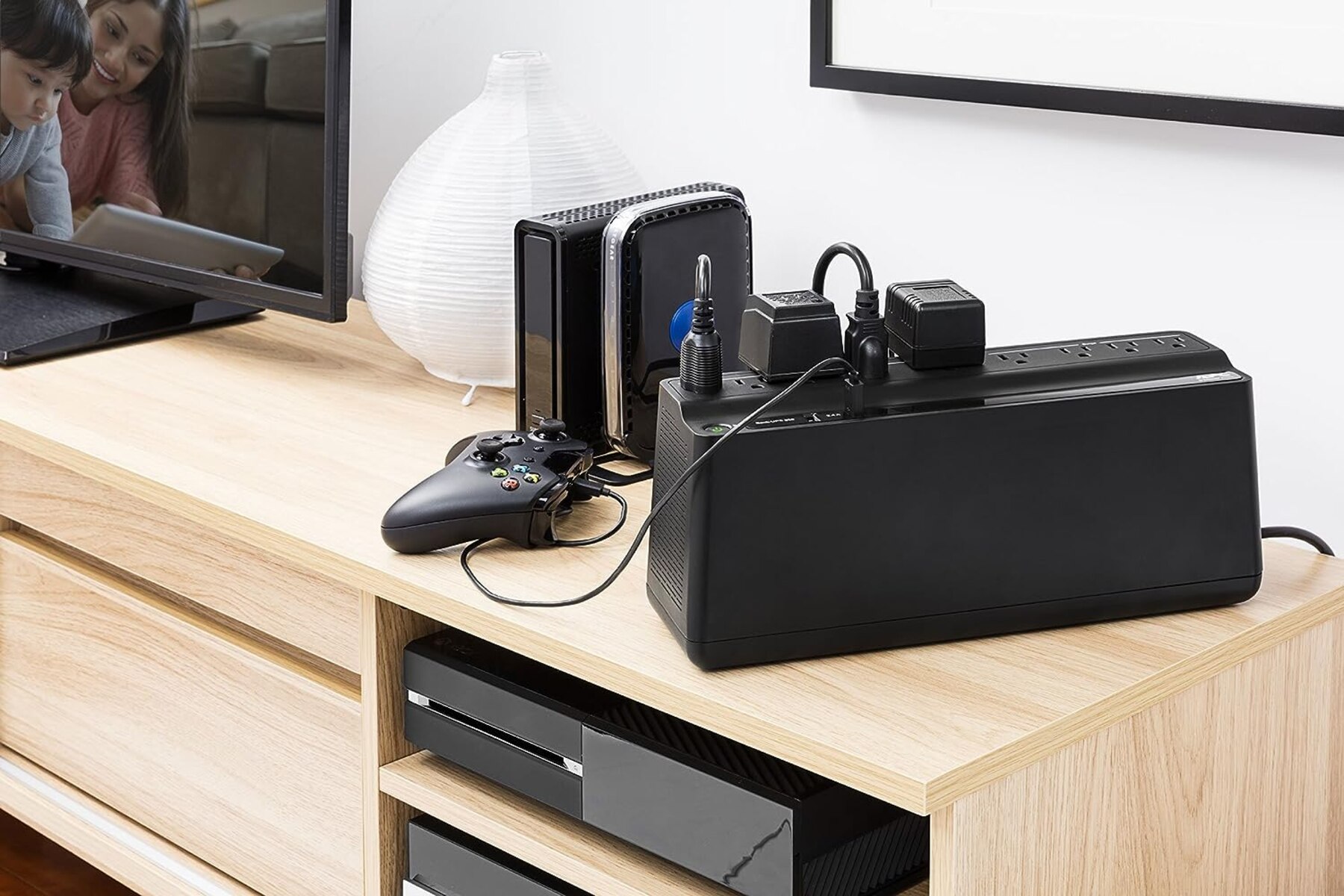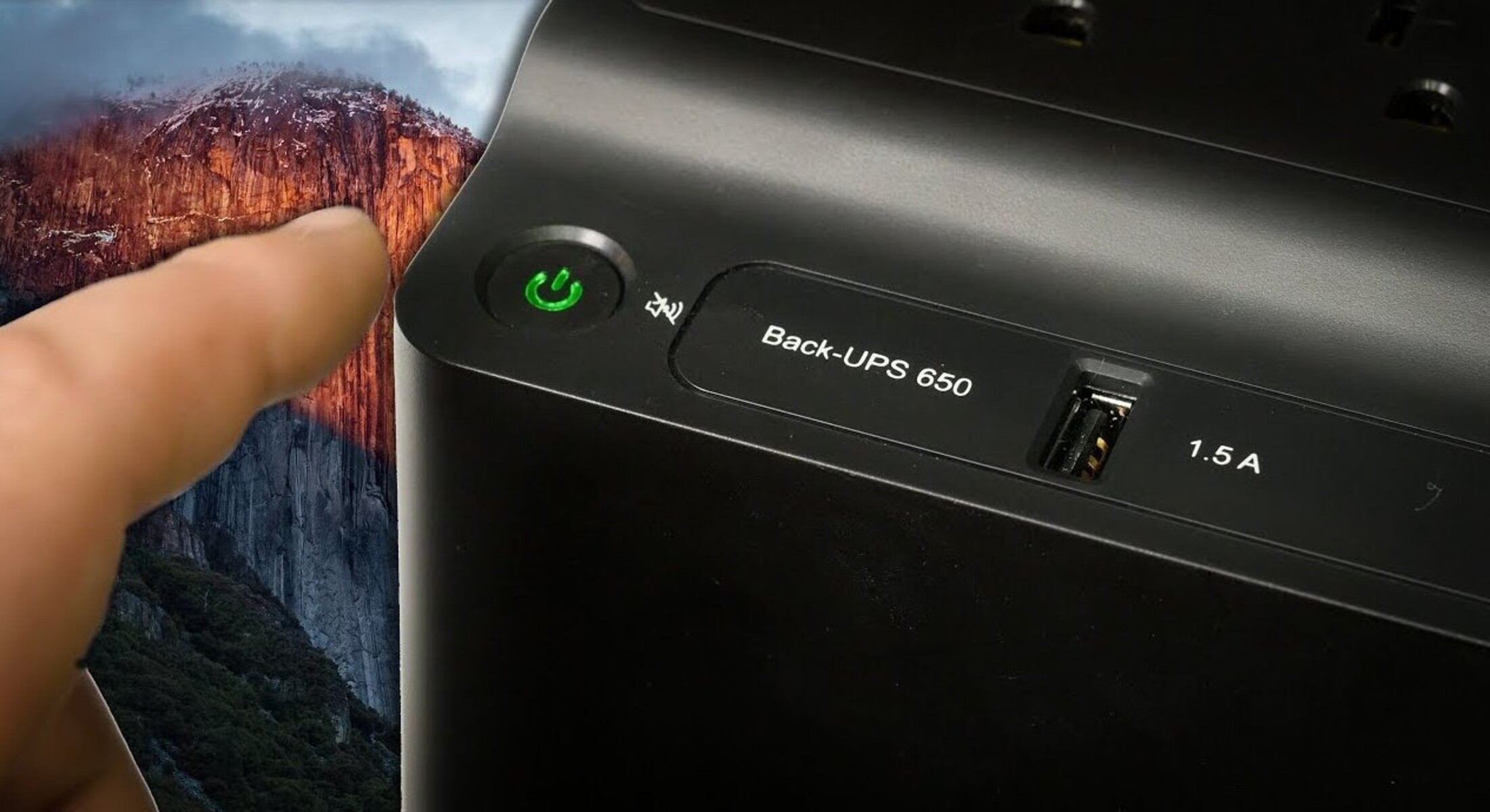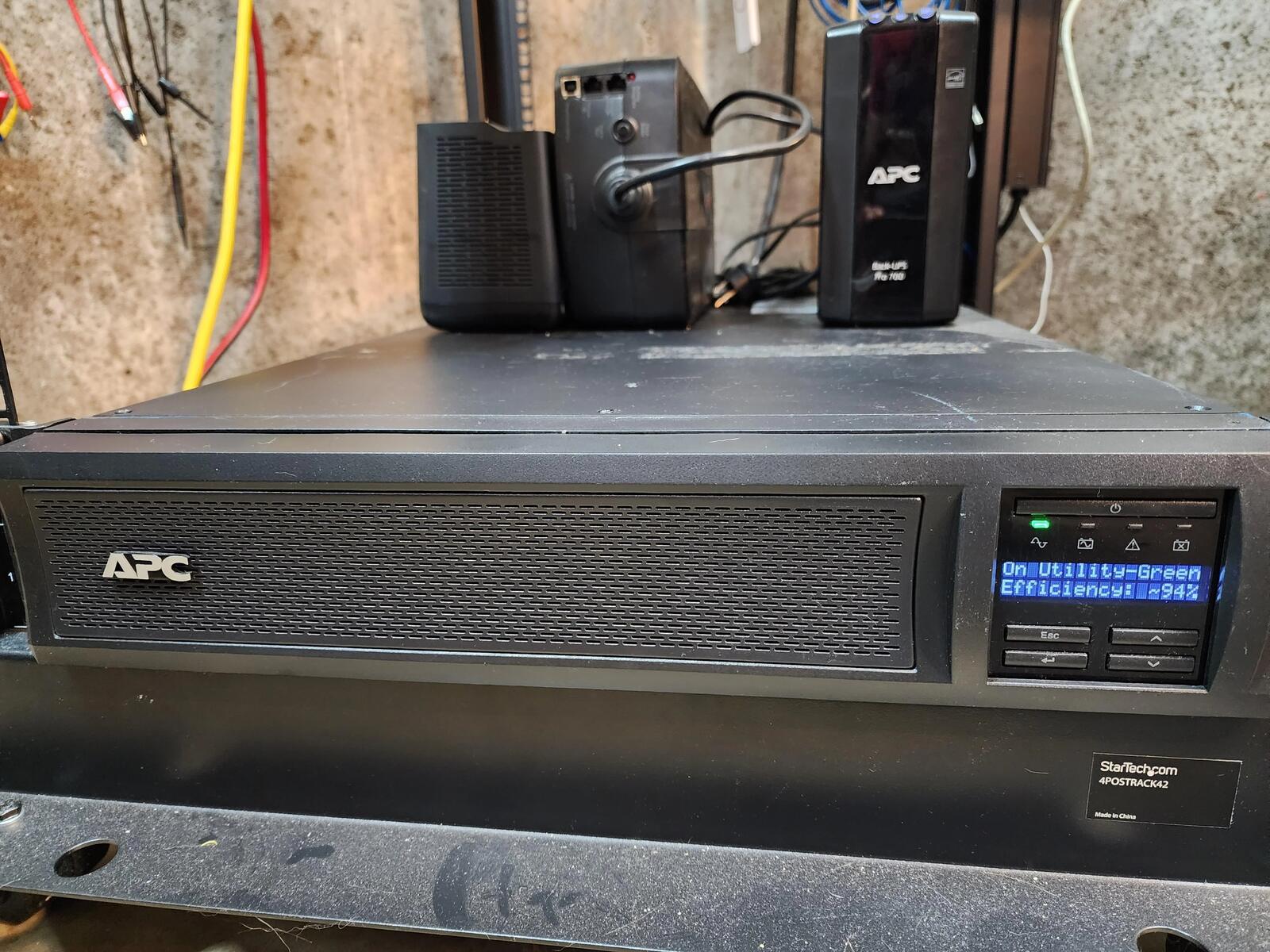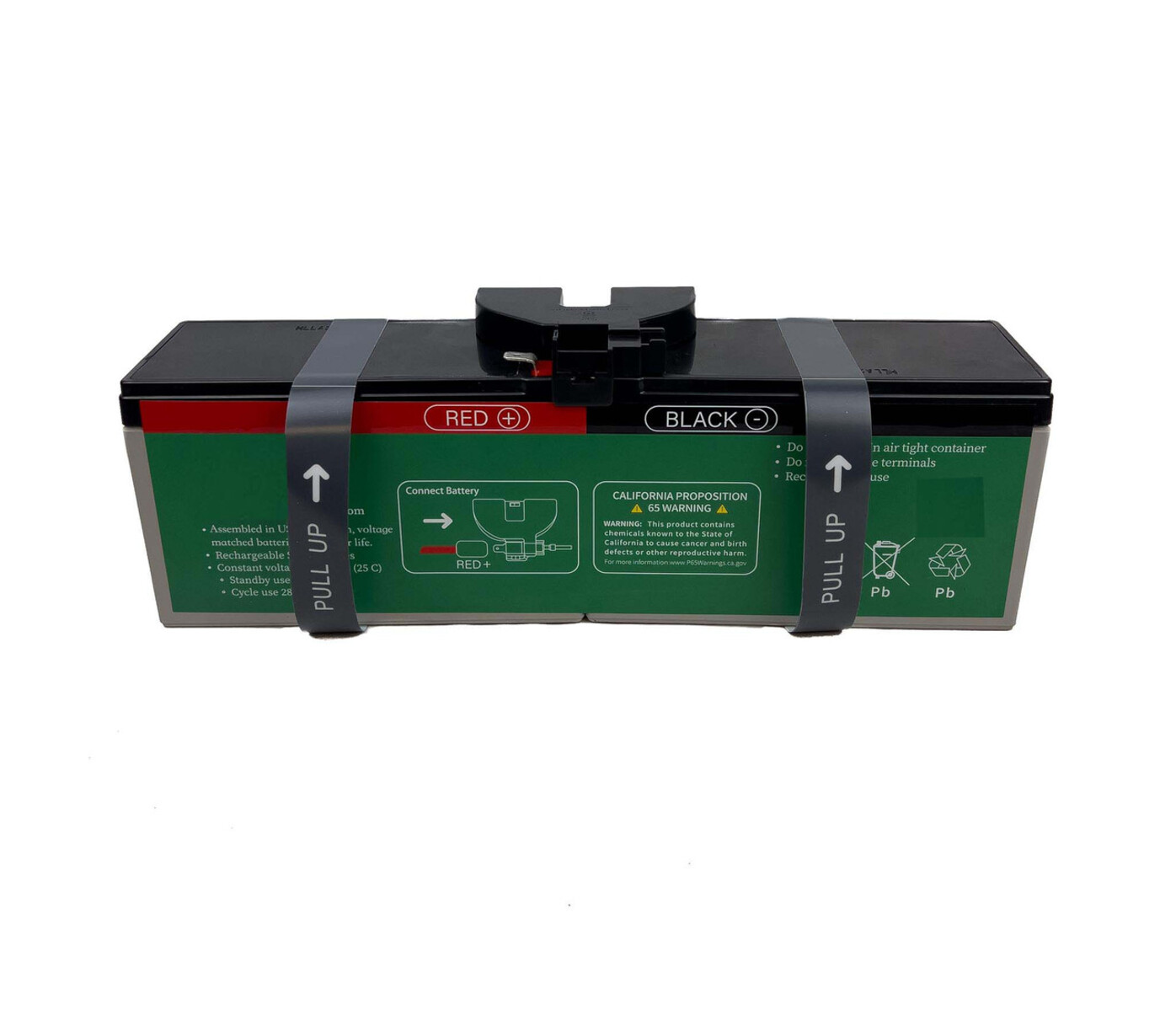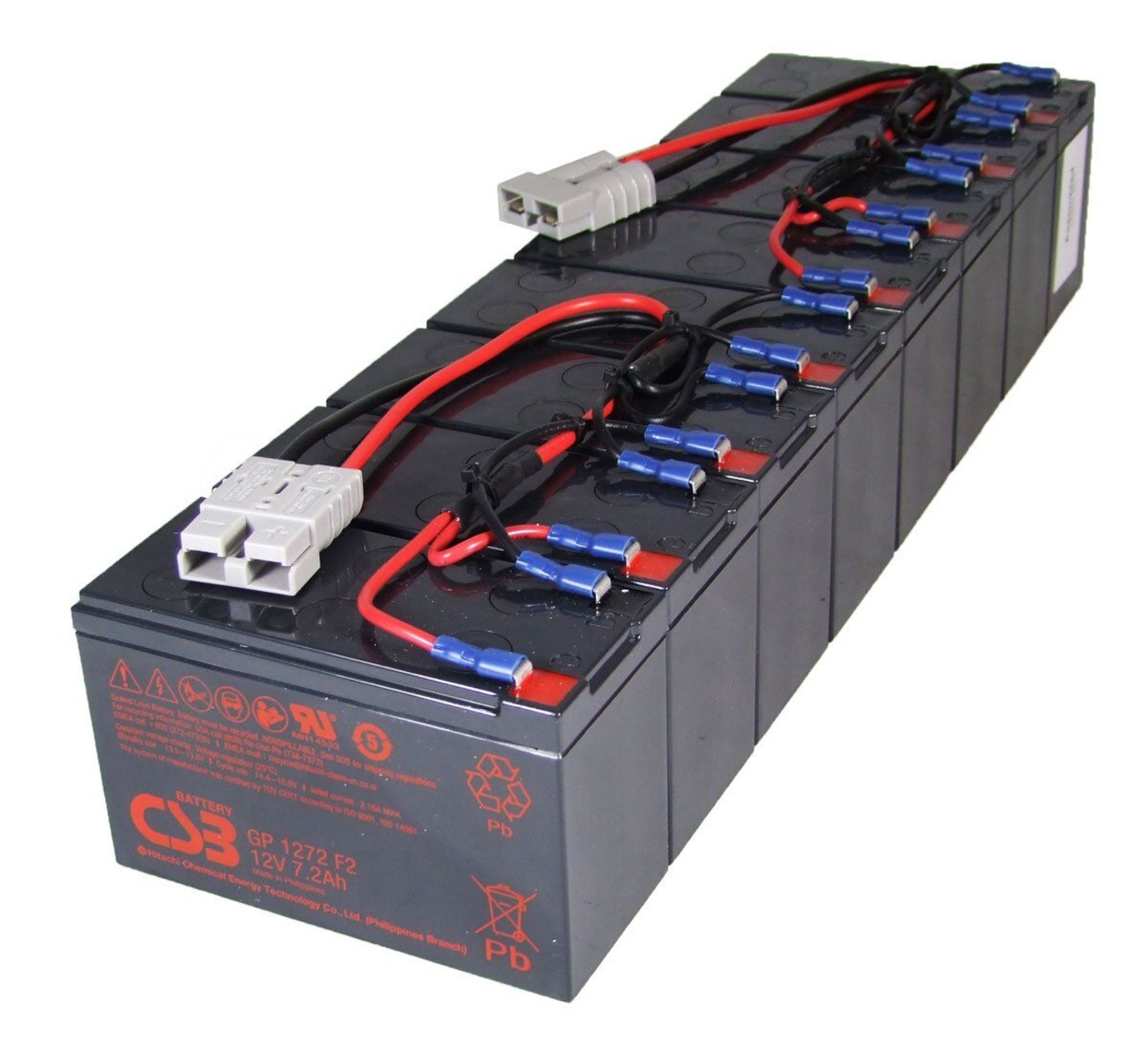Introduction
Welcome to our guide on the common causes and solutions for an APC BE650G UPS (Uninterruptible Power Supply) battery backup beeping when turned on. The APC BE650G UPS is designed to provide backup power to essential electronic devices in the event of a power outage or voltage fluctuation. However, there are times when the UPS may start beeping, indicating that there is an issue that needs to be addressed.
In this article, we will discuss the various reasons why your APC BE650G UPS might be beeping and provide solutions to resolve the issue. It is important to note that while some problems can be easily fixed, others may require professional assistance or replacement of components.
Understanding the causes of the beeping sound can help you troubleshoot and rectify the problem quickly, ensuring your devices remain protected and operational during power interruptions. So without further ado, let’s delve into the most common causes of a beeping APC BE650G UPS and how you can resolve them.
Common Causes of Beeping
When your APC BE650G UPS starts beeping, it is crucial to identify the underlying cause to effectively address the issue. Here are some of the most common reasons why your UPS may be beeping:
- Insufficient Battery Capacity: One possible cause of the beeping sound is that the battery of the UPS does not have enough capacity to sustain power for an extended period. This may happen if the battery is old and needs replacement or if the connected devices are drawing too much power.
- Overloaded UPS: An overloaded UPS can also trigger the beeping alarm. If the combined power consumption of the devices connected to the UPS exceeds its maximum load capacity, the UPS will beep to notify you of the overload. This can be resolved by reducing the number of devices connected or by upgrading to a higher-capacity UPS.
- Battery Replacement Needed: Over time, UPS batteries degrade and may no longer hold a charge. When this happens, the UPS will alert you with beeping sounds. If your UPS battery is old, it may be time to replace it to restore the UPS functionality.
- UPS Calibration Issue: An uncalibrated UPS may trigger beeping as a warning sign. Calibration ensures that the UPS accurately measures incoming voltage and adjusts its internal settings accordingly. If the UPS calibration is out of sync, it may cause false alarms. Recalibrating the UPS can help resolve this issue.
- Power Surge or Unstable Voltage: Power surges and unstable voltage can also activate the beeping sound on your APC BE650G UPS. This is a protective measure to safeguard connected devices from potential damage. Consider installing surge protectors or a voltage regulator to stabilize the incoming power supply.
It is important to note that the beeping sound can differ in pattern and frequency, depending on the specific issue. Understanding these common causes will help you diagnose and resolve the problem efficiently.
Insufficient Battery Capacity
One common cause of beeping in your APC BE650G UPS is insufficient battery capacity. The UPS is designed to provide backup power to connected devices during a power outage or voltage fluctuation. However, if the battery does not have enough capacity to sustain power for an extended period, the UPS will start beeping to alert you of the issue.
There are a few reasons why the battery may not have enough capacity:
- Old Battery: Over time, UPS batteries tend to lose their capacity to hold a charge. If your UPS battery is old and does not have sufficient charge retention, it will not be able to provide enough backup power, triggering the beeping sound. In this case, replacing the battery is the best solution.
- Power-Hungry Devices: Another reason for insufficient battery capacity is that the devices connected to the UPS are drawing too much power. If the combined power consumption exceeds the UPS’s capacity, it will not be able to provide adequate backup power, causing the beeping alarm. To resolve this, consider disconnecting or decreasing the power consumption of some devices.
- Inadequate Battery Size: It is crucial to ensure that the battery installed in your APC BE650G UPS is the correct size and capacity recommended by the manufacturer. Using a battery with a lower capacity than what is required will result in insufficient backup power and trigger the beeping. Check the UPS manual or consult with the manufacturer to confirm the appropriate battery size.
If you suspect that insufficient battery capacity is the cause of the beeping, there are a few steps you can take to address the issue:
- Replace the Battery: If your UPS battery is old or not holding a sufficient charge, it is recommended to replace it. Refer to the UPS manual or contact the manufacturer for the correct battery model compatible with your APC BE650G UPS.
- Reduce Power Consumption: Assess the devices connected to the UPS and determine if any power-hungry devices can be disconnected or replaced with more energy-efficient alternatives. By reducing the power consumption, you can ensure that the UPS is capable of supplying sufficient backup power.
- Upgrade the UPS: If you consistently experience insufficient battery capacity issues even after replacing the battery, it may be time to upgrade to a higher-capacity UPS. A UPS with a larger battery and higher wattage rating will provide increased backup power, ensuring your devices stay powered for a longer duration.
By addressing the issue of insufficient battery capacity, you can eliminate the beeping sound and ensure that your APC BE650G UPS provides reliable backup power when you need it most.
Overloaded UPS
An overloaded UPS is another common cause of beeping in your APC BE650G UPS. The UPS has a maximum load capacity which represents the total power consumption it can handle. If the combined power consumption of the devices connected to the UPS exceeds this maximum load capacity, the UPS will begin beeping to indicate an overload.
There are a few reasons why the UPS may become overloaded:
- Too Many Devices: If you have connected a large number of devices to the UPS, it is possible that their combined power consumption exceeds the UPS’s capacity. In such cases, the UPS will emit a beeping sound to alert you of the overload.
- Power-Hungry Devices: Some devices, such as gaming consoles, desktop computers, or power-hungry servers, draw a significant amount of power when operating. If you have multiple power-hungry devices connected to the UPS, it can easily surpass its load capacity, triggering the beeping alarm.
- Incompatible Devices: It is essential to ensure that the devices you connect to the UPS are compatible with its load capacity. If you connect a device that draws excessive power or exceeds the UPS’s capabilities, it can cause an overload and result in the beeping sound.
If you suspect that your UPS is overloaded, here are a few steps to resolve the issue:
- Identify Power-Hungry Devices: Evaluate the devices connected to the UPS and identify any power-hungry devices that contribute to the overload. Consider disconnecting these devices or connecting them directly to a different power source.
- Remove Unnecessary Devices: If you have connected devices to the UPS that do not require backup power, such as printers or non-essential peripherals, consider removing them from the UPS. This will help reduce the load on the UPS and prevent overloading.
- Upgrade to a Higher-Capacity UPS: If the combined power consumption of your devices consistently exceeds the UPS’s load capacity, it may be time to upgrade to a higher-capacity UPS. A UPS with a larger load capacity will ensure that you have sufficient power backup for all your connected devices.
By addressing the issue of an overloaded UPS, you can eliminate the beeping sound and ensure that your APC BE650G UPS operates within its specified load capacity, providing reliable backup power to your devices.
Battery Replacement Needed
If your APC BE650G UPS is emitting a beeping sound, it may indicate that the battery needs to be replaced. UPS batteries have a limited lifespan and will gradually lose their capacity to hold a charge over time. When the battery becomes excessively worn out or fails, the UPS will notify you by emitting a continuous beeping sound.
Here are some indications that your UPS battery may need replacement:
- Frequent Beeping: If your UPS is beeping more frequently than usual, it could be a sign of a deteriorated battery. The beeping may occur even when the power supply is stable, indicating that the battery is unable to maintain a sufficient charge.
- Short Backup Time: When your UPS battery is in good condition, it should be able to provide backup power for a reasonable duration. However, if you notice that the backup time has significantly decreased, it is a clear indication that the battery is no longer holding a charge effectively.
- No Power Output: In some cases, the battery may completely fail, resulting in no power output from the UPS. When this happens, the UPS will emit a continuous beeping sound to alert you of the battery failure.
If you suspect that the battery in your APC BE650G UPS needs replacement, follow these steps:
- Verify Battery Status: Check the UPS’s LED indicators or LCD display, if available, to determine the battery status. If the indicators show a fault or if the battery status is low, it is likely that the battery needs replacement.
- Obtain a Replacement Battery: Contact the manufacturer or an authorized retailer to acquire a new battery specifically designed for your APC BE650G UPS. Ensure that the replacement battery model is compatible with your UPS to guarantee optimal performance.
- Replace the Battery: Follow the instructions provided in the UPS’s manual to safely replace the battery. Typically, this involves disconnecting the old battery, connecting the new battery, and securing it properly. Take precautions to prevent accidental shock or short circuits during the replacement process.
Regularly replacing the battery in your UPS is crucial to maintaining reliable backup power. By addressing the battery replacement when necessary, you can eliminate the beeping sound and ensure that your APC BE650G UPS continues to provide dependable backup power to your devices.
UPS Calibration Issue
If your APC BE650G UPS is beeping, it may indicate a calibration issue. The calibration process ensures that the UPS accurately measures the incoming voltage and adjusts its internal settings accordingly. If the UPS calibration is not properly set, it can cause false alarms and trigger the beeping sound unnecessarily.
Here are some signs that your UPS may have a calibration issue:
- Frequent False Alarms: If your UPS is consistently beeping even when there is no power interruption or voltage fluctuation, it could be a sign that the calibration is off. False alarms can be disruptive and may lead to unnecessary concerns about power stability.
- Erratic Behavior: A UPS with calibration issues may exhibit irregular behavior, such as unexpected shutdowns or improper voltage regulation. This can be attributed to the UPS unable to accurately assess and respond to changes in the incoming power supply.
- Inaccurate Voltage Readings: Check the UPS display or indicators to see if the voltage readings seem inconsistent or incorrect. If the displayed voltage does not correspond to the actual voltage of the power supply, it may indicate a calibration problem.
If you suspect a calibration issue with your UPS, follow these steps to address the problem:
- Read the Manual: Consult the UPS manual or visit the manufacturer’s website to understand the recommended calibration procedure specific to your APC BE650G UPS model.
- Perform Calibration: Follow the instructions provided in the manual to recalibrate the UPS. This typically involves disconnecting the input power, connecting a known stable power source, and initiating the calibration process through the UPS control panel or software interface.
- Monitor Performance: After performing the calibration, monitor the UPS’s behavior to ensure that false alarms are no longer occurring and that the voltage readings are accurate. If the beeping issue persists or if you notice any other abnormalities, contact the manufacturer for further assistance.
Calibrating your UPS regularly is essential to maintain its reliability and accuracy in detecting power disruptions. By addressing calibration issues, you can eliminate false alarms and ensure that your APC BE650G UPS provides accurate protection for your connected devices.
Power Surge or Unstable Voltage
If your APC BE650G UPS is beeping, it might be due to a power surge or unstable voltage. Power surges occur when there is a sudden and significant increase in electrical voltage, while unstable voltage refers to fluctuations in the power supply. In both cases, the UPS acts as a safeguard to protect your connected devices from potential damage.
Here are some indicators that a power surge or unstable voltage may be the cause of the beeping sound:
- Sudden Power Disruptions: If your area experiences frequent power outages or surges, your UPS might beep to alert you of the unstable power supply. The UPS will switch to battery backup mode to keep your devices powered during these disruptions.
- LED Indicators: Check the UPS’s LED indicators to see if they indicate a surge event or fluctuations in voltage. Most UPS systems have LEDs that illuminate or blink when they detect such issues.
- Device Protection Mode: Some UPS models have a feature called “Device Protection Mode” which enables enhanced protection against power surges. If the UPS enters this mode, it may beep to notify you of the activated surge protection.
To address power surge or unstable voltage issues, consider the following steps:
- Install Surge Protectors: Use surge protectors in addition to your UPS to provide an extra layer of protection against power surges. Surge protectors help absorb and divert excessive voltage away from your devices.
- Stabilize the Power Supply: If you frequently experience unstable voltage, consider using a voltage regulator or power conditioner to stabilize the power supply before it reaches your devices. These devices help filter out voltage fluctuations and provide a consistent power output.
- Check Grounding and Wiring: Ensure that the electrical outlets you are using for your UPS and connected devices have proper grounding. Faulty wiring or improperly grounded outlets can increase the risk of power surges and voltage fluctuations. Consult an electrician if needed.
Protecting your devices from power surges and unstable voltage is essential to prevent damage and ensure their longevity. By taking appropriate measures and addressing these issues, you can eliminate the beeping sound and have peace of mind knowing your APC BE650G UPS is offering reliable protection for your valuable electronics.
Resolving the Beeping Issue
When your APC BE650G UPS is beeping, it is important to take the necessary steps to resolve the issue and restore proper functionality. Here are a few actions you can take to address the beeping problem:
- Check Battery Connection: Ensure that the battery in your UPS is securely connected. If the battery is loose or disconnected, it can trigger the beeping sound. Reconnecting the battery correctly can often resolve this issue.
- Reduce Load on UPS: If your UPS is overloaded, reduce the number of devices connected to it or distribute the load among multiple UPS devices. By managing the power consumption, you can prevent the UPS from exceeding its maximum load capacity and eliminate the beeping sound.
- Replace Battery: If the battery in your UPS is old or no longer holding a charge, it is crucial to replace it. Refer to the UPS manual or contact the manufacturer to obtain the correct replacement battery for your APC BE650G UPS model.
- Perform UPS Calibration: If you suspect a calibration issue, follow the instructions provided in the UPS manual to recalibrate the UPS. Proper calibration ensures accurate voltage measurement and helps eliminate false alarms that trigger the beeping sound.
- Protect Against Power Surges: Install surge protectors and consider using voltage regulators or power conditioners to protect your devices from power surges and unstable voltage. These measures can reduce the risk of the UPS beeping due to sudden voltage fluctuations.
Remember, if the beeping issue persists after attempting these steps, it is advisable to consult the APC customer support or a professional technician for further assistance. They can examine the UPS and provide more specific guidance to resolve the problem.
By taking prompt action and addressing the root cause of the beeping issue, you can restore the proper functionality of your APC BE650G UPS and ensure uninterrupted power protection for your valuable devices.
Check Battery Connection
If your APC BE650G UPS is beeping, one of the first things you should check is the battery connection. A loose or disconnected battery can trigger the beeping sound and affect the functionality of the UPS. Checking and ensuring a proper battery connection is a simple step that can often resolve the issue.
Here’s how you can check the battery connection in your UPS:
- Power off and disconnect the UPS: Before checking the battery connection, make sure to turn off and unplug the UPS from the power source. This ensures your safety and prevents any potential electrical accidents while working on the UPS.
- Locate the battery compartment: Depending on the UPS model, the battery compartment can be located at the back or bottom of the unit. Refer to the UPS manual or manufacturer’s instructions to find the exact location of the battery.
- Inspect the battery connections: Carefully examine the battery connections to ensure they are securely attached. Check for any loose wires or signs of corrosion. If the battery is not properly connected, firmly push or reconnect any loose wires, ensuring a secure fit.
- Check for damaged wires or connectors: Inspect the battery wires and connectors for any signs of damage or wear. If you notice any frayed wires, bent connectors, or other visible damage, it may be necessary to replace the battery wires or connectors.
- Reconnect the battery: Once you have inspected the battery connections and ensured they are in good condition, reconnect the battery to the UPS. Make sure to follow the correct polarity, as indicated by the positive (+) and negative (-) markings or color coding.
- Power on the UPS: After reconnecting the battery, plug the UPS back into the power source and power it on. Monitor the UPS to see if the beeping sound has stopped. If the battery connection was the issue, the beeping should no longer occur.
If you have checked and double-checked the battery connection, but the beeping sound persists, it may be necessary to further investigate other potential causes or seek professional assistance from APC customer support or a qualified technician.
By ensuring a proper battery connection, you can resolve any issues related to loose or disconnected batteries and eliminate the beeping problem in your APC BE650G UPS.
Reduce Load on UPS
If your APC BE650G UPS is beeping, it could be an indication that the UPS is overloaded. An overloaded UPS occurs when the combined power consumption of the devices connected to it exceeds its maximum load capacity. This overload can trigger the beeping sound and may affect the UPS’s ability to provide backup power effectively.
To address an overloaded UPS and stop the beeping, consider the following steps to reduce the load:
- Assess connected devices: Take a closer look at the devices connected to the UPS and evaluate their power requirements. Identify any power-hungry devices that consume a significant amount of power.
- Remove unnecessary devices: Determine if there are any non-essential devices connected to the UPS that do not require backup power during an outage. Examples include printers, scanners, or secondary monitors. Disconnecting these devices from the UPS will help reduce the load.
- Balance power consumption: If you have a mix of power-hungry and lower-power devices connected to the UPS, consider redistributing the devices across multiple power sources or using separate UPS units. This ensures that the UPS does not surpass its load capacity.
- Upgrade to a higher-capacity UPS: If you frequently experience an overloaded UPS even after redistributing devices or removing non-essential ones, it might be necessary to upgrade to a UPS with a higher load capacity. Upgrading to a higher-capacity UPS will allow for a greater power capacity and accommodate the connected devices without overloading the system.
It’s important to note that an overloaded UPS can diminish its performance and compromise the backup power it provides to crucial devices. Therefore, taking steps to reduce the load will help ensure the UPS functions optimally and is prepared to supply sufficient backup power during power outages or voltage fluctuations.
By assessing the power requirements of connected devices, removing unnecessary devices, and potentially upgrading to a higher-capacity UPS, you can effectively manage the load on your APC BE650G UPS, stop the beeping, and ensure reliable backup power for your critical electronic devices.
Replace Battery
If your APC BE650G UPS is emitting a beeping sound, it is possible that the UPS battery needs to be replaced. UPS batteries have a limited lifespan and can deteriorate over time, leading to reduced backup power and triggering the beeping alarm.
Here are some signs that indicate it is time to replace the battery in your UPS:
- Decreased Backup Time: If you notice that the UPS’s backup time has significantly decreased compared to when it was new, it indicates that the battery is no longer holding a charge effectively. This reduced backup time can leave your connected devices vulnerable during power outages.
- Frequent Beeping: If the UPS emits frequent beeping sounds, even when the power supply is stable, it could be a sign of a worn-out battery. The UPS uses the alarm to indicate that the battery needs to be replaced.
- Age of the Battery: UPS batteries typically have a lifespan of 3-5 years, depending on usage and environmental factors. If your UPS battery is reaching or exceeds this age range, it is a good indication that it needs replacement.
If you suspect that the battery in your APC BE650G UPS requires replacement, follow these steps:
- Turn off and unplug the UPS: Before replacing the battery, make sure to turn off and unplug the UPS from the power source. This ensures your safety and prevents any electrical accidents during the replacement process.
- Source a compatible replacement battery: Contact the manufacturer or an authorized retailer to obtain a replacement battery specifically designed for your APC BE650G UPS. Ensure that the replacement battery is compatible with your UPS model for optimal performance.
- Replace the battery: Refer to the UPS manual or manufacturer’s instructions for the correct procedure to replace the battery. Typically, it involves opening the battery compartment, disconnecting the old battery, and connecting the new battery following the correct polarity (positive to positive, negative to negative).
- Secure the battery and close the compartment: Once the new battery is properly connected, ensure it is secure in place within the battery compartment. Close the compartment securely, ensuring no loose connections or wires.
- Perform a test run: After replacing the battery, plug the UPS back into the power source and turn it on. Monitor the UPS to ensure it operates normally without issuing any beeping alarms. Perform a test run to confirm that the new battery functions correctly and provides the expected backup power.
Regularly replacing the battery in your UPS is essential to maintain reliable backup power for your devices. By following the correct procedure and using compatible replacement batteries, you can eliminate the beeping sound and ensure your APC BE650G UPS continues to provide effective power protection.
Perform UPS Calibration
If your APC BE650G UPS is beeping, it may be a sign that the UPS requires calibration. Calibration is the process of ensuring that the UPS accurately measures the incoming voltage and adjusts its internal settings accordingly. If the calibration is off, it can cause false alarms and trigger the beeping sound unnecessarily.
Here’s how you can perform calibration on your APC BE650G UPS:
- Refer to the UPS manual: Consult the user manual or documentation provided with your APC BE650G UPS. It will provide specific instructions and guidelines for calibrating the UPS.
- Power off the UPS: Before initiating the calibration process, make sure to power off the UPS and disconnect it from the power source. This ensures your safety during the calibration procedure.
- Confirm load is removed: Ensure there are no devices connected to the UPS during the calibration process. Remove all devices from the UPS’s outlets to eliminate any interference and ensure accurate calibration.
- Access the calibration feature: Depending on your UPS model, you may be able to access the calibration feature through the UPS control panel or software interface. Follow the instructions provided in the user manual to navigate to the calibration settings.
- Start the calibration process: Once you have accessed the calibration feature, initiate the calibration process as per the instructions provided. This may involve following on-screen prompts or manually adjusting the calibration settings.
- Monitor the calibration process: During the calibration, monitor the UPS to ensure that it completes the process successfully. The calibration process may take a few minutes to complete, during which the UPS may emit certain indicators or status lights.
- Restore normal operation: After the calibration process is complete, restore normal operation of the UPS by plugging it back into the power source and turning it on. Monitor the UPS to see if the beeping sound has stopped.
If the beeping sound persists after calibration, or if you encounter any difficulties during the calibration process, it is recommended to contact APC customer support or consult a qualified technician for further assistance.
By performing UPS calibration, you can ensure that your APC BE650G UPS accurately measures the voltage and adjusts its internal settings, eliminating false alarms and preventing unnecessary beeping sounds.
Protect Against Power Surges
To prevent the beeping sound in your APC BE650G UPS and protect your connected devices, it is important to take measures to safeguard against power surges. Power surges can occur when there is a sudden and significant increase in electrical voltage, potentially damaging or destroying electronic devices. By implementing the following strategies, you can protect your equipment from power surges:
- Install Surge Protectors: Surge protectors are devices designed to absorb and divert excessive voltage away from your sensitive electronics. Install surge protectors on the outlets where your devices are plugged in, including those connected to your APC BE650G UPS. Ensure that the surge protectors you use are of high quality and can handle the power requirements of your devices.
- Consider Whole-House Surge Protection: In addition to individual surge protectors, you may want to consider installing a whole-house surge protection system. These systems protect not only the devices connected to specific outlets but your entire electrical system against power surges originating from the main power supply. Consult with an electrician to determine the best whole-house surge protection solution for your needs.
- Use Voltage Regulators or Power Conditioners: Voltage regulators or power conditioners regulate and stabilize the voltage supplied to your devices. They provide a consistent power output, protecting against sudden fluctuations in voltage that can occur due to power surges. These devices are especially useful in areas with unreliable or inconsistent power supply.
- Unplug Devices During Storms: During storms or when you anticipate power irregularities, unplug sensitive electronic devices from the power outlet or turn off the main power supply to prevent potential damage from lightning strikes or power surges.
- Invest in an Uninterruptible Power Supply (UPS): A UPS, like the APC BE650G, not only provides backup power during outages but also acts as a line of defense against power surges. UPS systems offer built-in surge protection to shield your devices from sudden voltage spikes, ensuring their continued operation and preventing damage.
By implementing these protection measures, you can significantly reduce the risk of power surges and the accompanying beeping sound in your APC BE650G UPS. Protecting your equipment from power surges enhances their longevity and prevents unexpected downtime or costly replacements.
Conclusion
In conclusion, when your APC BE650G UPS is beeping, it is essential to address the underlying issues promptly to restore its proper functionality and protect your connected devices. By understanding the common causes of beeping and following the appropriate solutions, you can resolve the problem effectively.
Whether the beeping is a result of insufficient battery capacity, an overloaded UPS, battery replacement needed, calibration issues, or power surges, there are specific steps you can take to alleviate the problem.
– If you suspect the battery capacity is insufficient, consider replacing the battery with a new one or reducing the power consumption by disconnecting power-hungry devices.
– In the case of an overloaded UPS, redistribute the devices or consider upgrading to a higher-capacity UPS to accommodate the power requirements.
– If the battery needs replacement, follow the recommended procedure specified in the UPS manual or seek professional assistance to ensure a successful replacement.
– Calibration can solve beeping issues caused by inaccurate voltage measurements. Refer to the UPS manual for calibration instructions and perform the calibration process accordingly.
– Protecting against power surges is crucial. Install surge protectors, consider whole-house surge protection, use voltage regulators or power conditioners, and unplug devices during storms to safeguard your equipment.
Remember to consult the APC BE650G UPS manual and manufacturer guidelines for specific instructions and recommendations tailored to your UPS model. If the beeping issue persists or if you require further assistance, do not hesitate to reach out to APC customer support or consult a professional technician.
By actively addressing these issues and taking the necessary steps, you can ensure that your APC BE650G UPS functions optimally, providing reliable backup power and protection for your valuable electronic devices.







